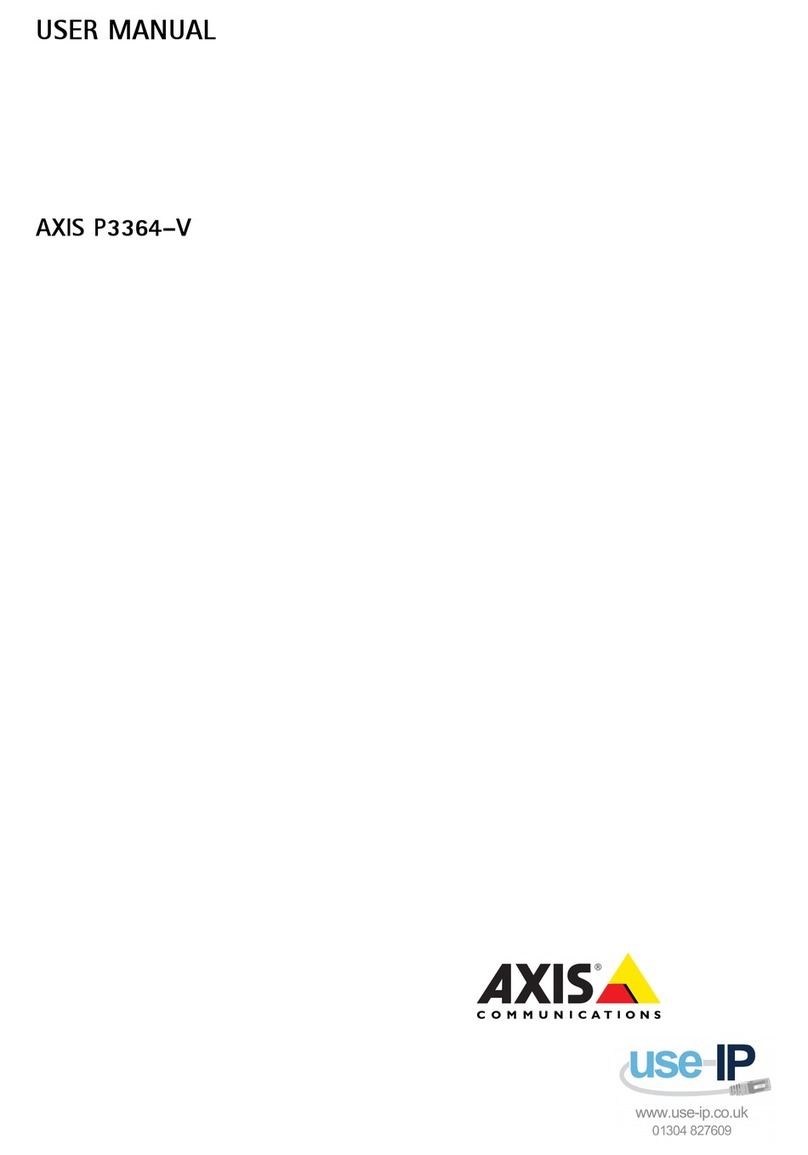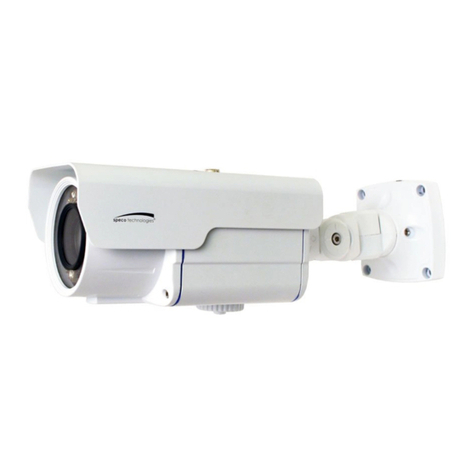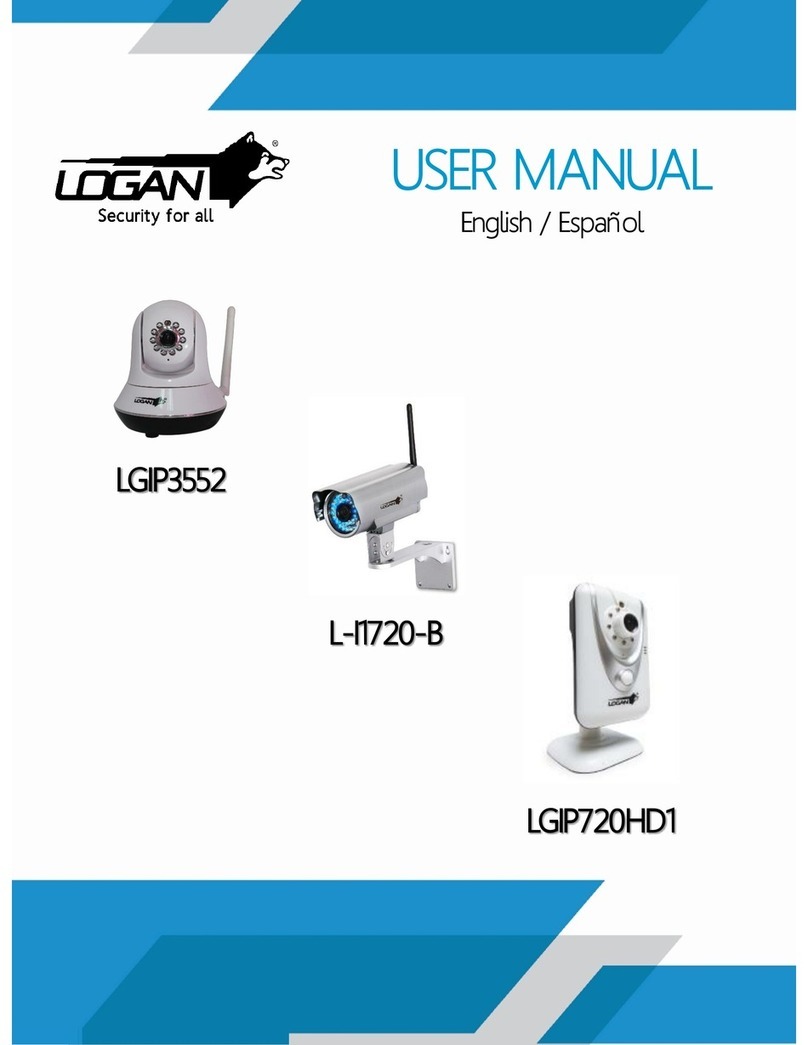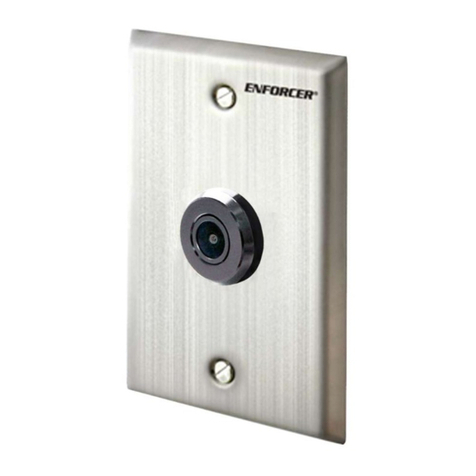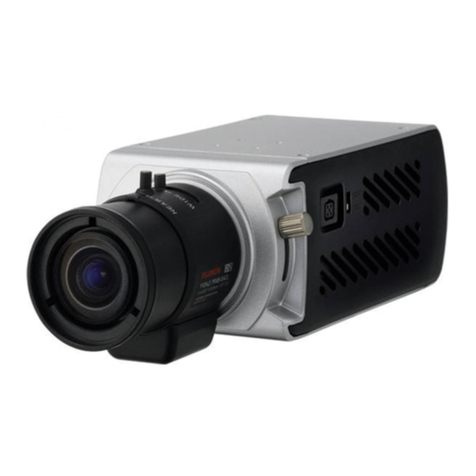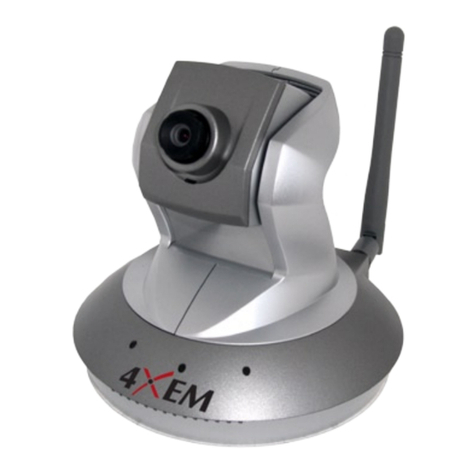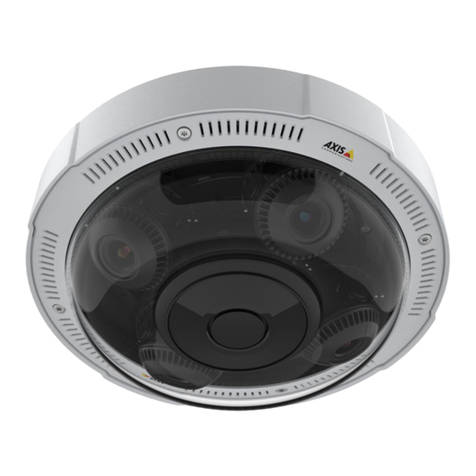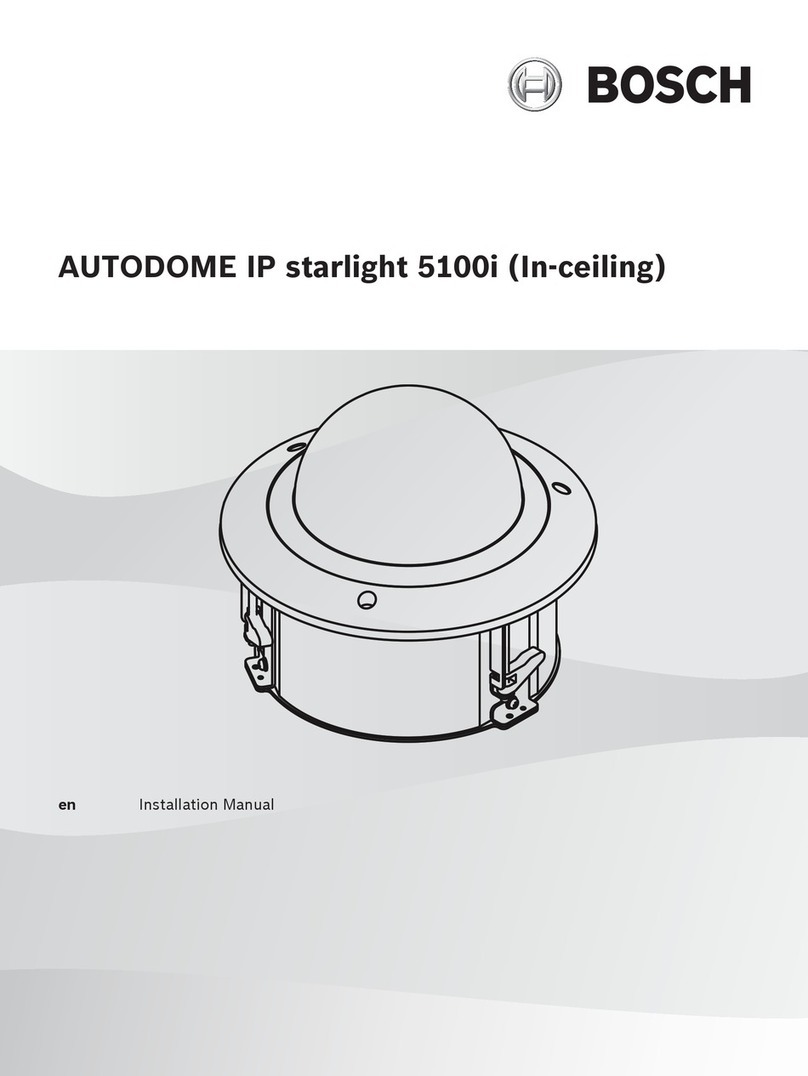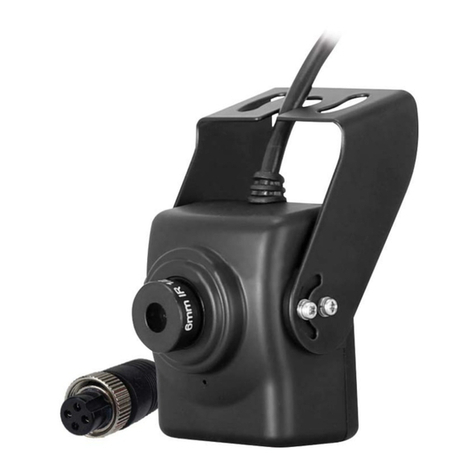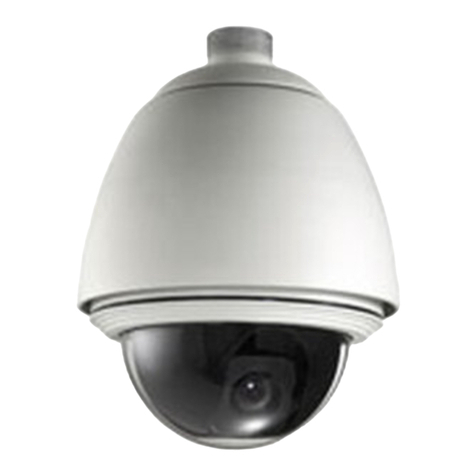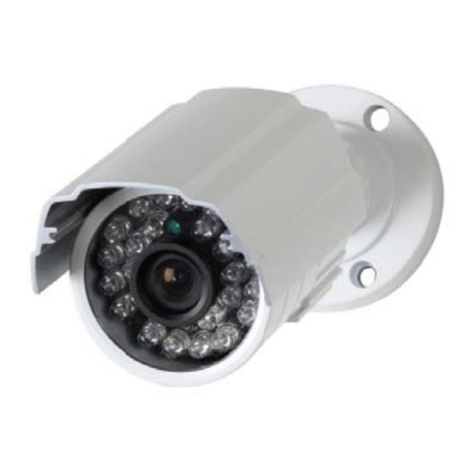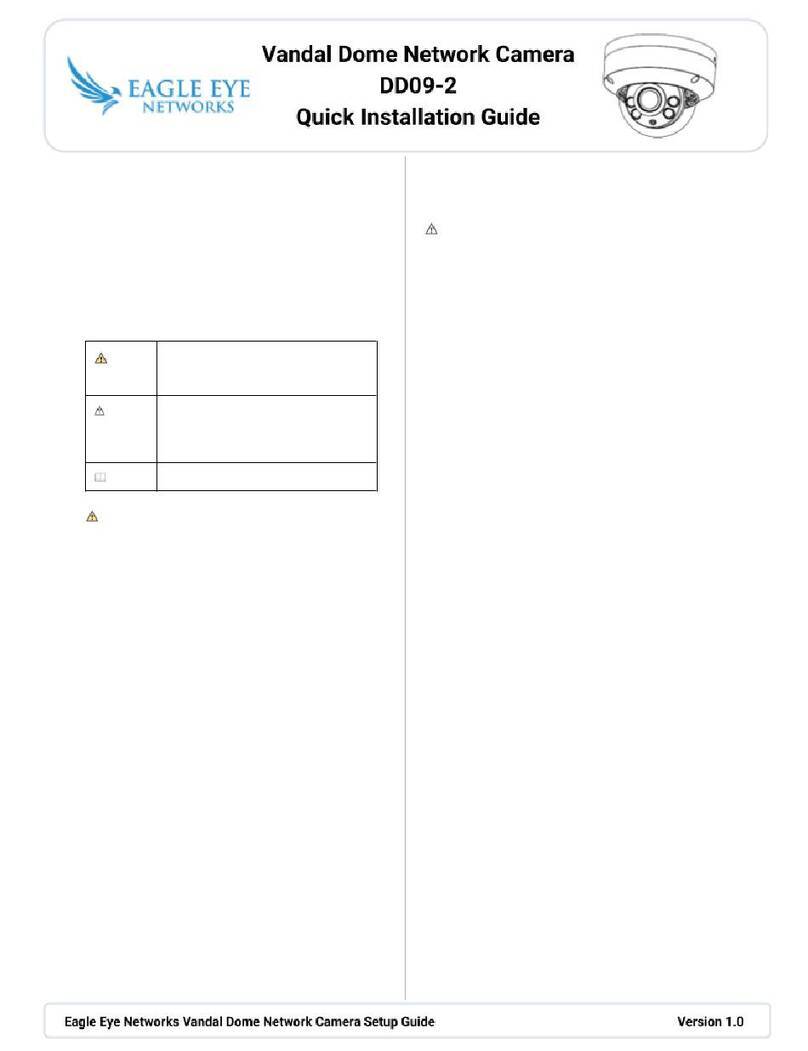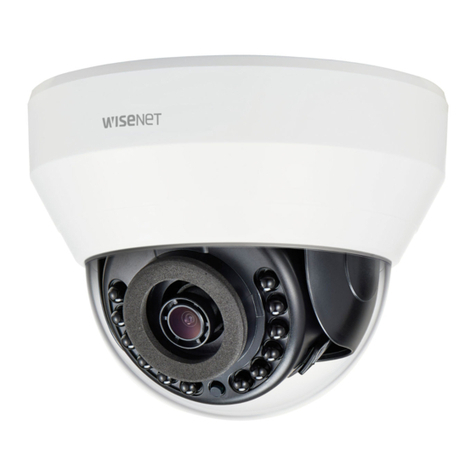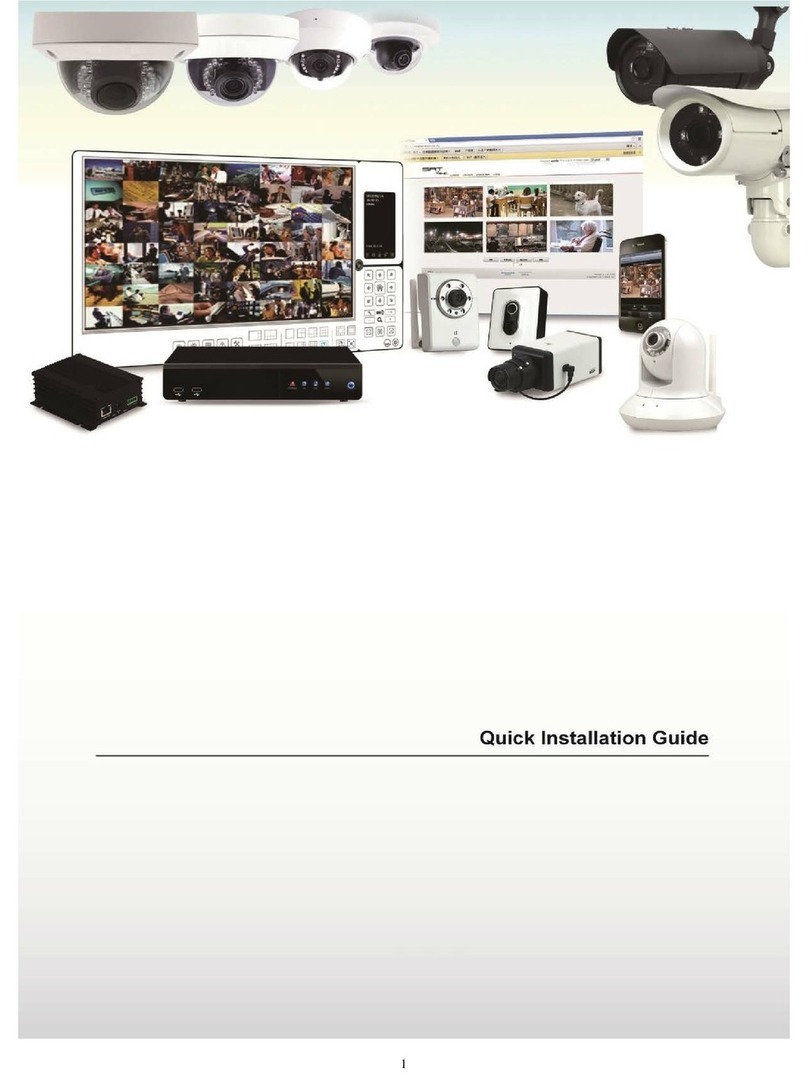Tokyo Electronic CS8550D User manual

B/W CCD Camera
Model CS8550D
Operation Manual
TOKYO ELECTRONIC INDUSTRY CO., LTD.
2001-08-01

1
BEFORE USE
-
GENERAL SAFETY INSTRUCTIONS
This instruction manual contains important information for the operator (user)
and/or people around him/her to avoid personal injury, or property damage to
him/her or people around him/her by using this product correctly. Prior to use, read
this operation manual carefully to fully understand its instructions for correct use.
OWNER’S RECORD
Please fill in the blank below the model name and product serial number, which is
found on bottom chassis of your device. Keep this number for your record.
Model Name
Serial No.
WARNINGS & CAUTIONS
[Definition of markings]
The meaning of each mark used in this instruction manual is given below.
DANGER This mark warns the user that improper use, indicated with this mark,
may cause death or severe personal injuries against the user or people
around him/her.
CAUTION This mark warns the user that improper use, indicated with this mark,
may cause personal injuries (*1) or material damages (*2) against the
user or people around him/her.
Notes
*1 : Personal injuries mean wounds, burns, electric shocks, and others for
which the person injured need not to be hospitalized nor to be cared for the
long term.
*2 : Material damages mean any direct or consequential damages related to
property or material loss.
This mark indicates what the user SHOULD NOT DO. The details of things which the
user should not do are described next to this mark.
This mark indicates what the user MUST DO. The details of things which the user must
do are described next to this mark.
This mark indicates that the user must be alert against a possible DANGER. The details
of the danger which the user must be aware of are described next to this mark.
This mark indicates that the user are given a CAUTION against possible hazards. The
details of the caution which the user must be aware of are described next to this mark.

2
●Handling Precautions
DANGER
MUST
If any overheating sign is observed, discontinue use immediately.
In the event that smoke, smell, or any other overheating sign is observed, turn its
power switch OFF immediately, and remove its camera cable from camera
connector. Do NOT try to continue to use your camera. To do so in spite of a
clear sign of a malfunction invites a fire, an electric shock hazard, or any other
serious damage. In such case, after confirming that there is no risk of a fire
accident, contact us or our dealer/distributor through which you purchased this
device for repair service. To avoid hazard, do NEVER attempt to repair it
yourself.
MUST
If any malfunctioning sign is observed, discontinue use immediately.
Do NOT try to use this device when it is obviously malfunctioning. (Example:
No images on the monitor) In the event of a malfunction, turn its power switch
OFF immediately, and remove its camera cable from camera connector. In such
case, contact us or our dealer/distributor through which you purchased this device
for repair service.
MUST
If any liquid gets into the device, discontinue use immediately.
In the event that water, or any other type of liquid gets into the body, do NOT try
to continue to use the device. To do so invites a fire or an electric shock hazard. In
such case, turn its power switch OFF immediately, and then remove its camera
cable from camera connector. After that, contact us or our dealer/distributor
through which you purchased this device for repair service/technical advice.
NEVER pull apart
Do NOT disassemble this device.
Do NOT attempt to pull apart, repair, or modify your camera yourself. To do so
might lead to a fire or an electric shock accident. Contact us or the
dealer/distributor from which you purchased the device for repair/modification.
DON’T
Do NOT supply any power other than specified.
This device is designed to work only under specified voltage. Do NOT attempt to
supply the device with power other than specified. Supplying the device with any
unspecified power invites a fire or an electric shock hazard.
(CS8550D --- DC+12V)
DON’T
Do NOT use the camera in a high-humidity environment.
Do NOT place your camera near a humidifier, or in other high-humidity
environment. To do so might cause a fire or an electric shock accident.

3
●Handling Precautions
CAUTION
CAUTION
If the camera is operated in the electromagnetic field, there may be cases where beat
noises (vertical, horizontal, or oblique stripes) appear in the video output. In that
case, take preventive measures on the electromagnetic-wave generating source so
that your camera do not receive the interference by the electromagnetic-wave. Take
extra precautions against electromagnetic-wave-interference if your camera is used
with a servomotor, inverter, or other electromagnetic-wave-generating equipment.
CAUTION
Avoid giving a strong shock against the camera body. It might cause a breakdown
or damage. If your camera is used in a system where its camera head is subjected to
strong repetitive shocks, its camera head is possible to break down. If you intend to
use your camera in such a situation, make sure to use an optional
camera-connector-fixing-hardware to connect the connector-plug to the camera
body.
CAUTION
When the camera is not in use, put a lens or a lens-cap onto the camera head so that
the image pickup plane of CCD is protected from dust, foreign object, or any other
flaw-causing object. If the glass plane (image pickup plane) gets dirty, clean it with
a cotton swab. When it needs to be cleaned with a cleaner, be sure NOT to use any
organic solvent other than ethyl alcohol. As a countermeasure against
condensation, when the camera is moved from a warm condition/environment to a
cold one, take appropriate precautions to prevent condensation from forming on the
camera.
CAUTION
Do not pull strongly the camera cable/camera-head nor swing it. The stress from
pulling or swinging may cause damage in the coating of the cable, or breaks in the
inside wires.
CAUTION
Avoid short-circuiting signal output. Otherwise, it may cause a malfunction.
CAUTION
If too much amount of light, (= the incoming light amount of 100 times or greater in
comparison with standard light) enters CCD image pickup plane, video output
might not be obtained. In such a case, take measures to reduce the amount of
incoming light.
CAUTION
Do NEVER expose its camera head to any intensive light (such as direct sunlight).
Otherwise, its inner image pickup device might get damaged.
CAUTION
When mounting a lens, take extra caution so that the lens is not tilted, nor does flaw
exist at the lens-mount-screw part. Also check to confirm that no dirt nor other
foreign object is put inside. Improper mounting might cause the parts to become
locked.

4
DANGER
DON’T
Do NOT use any optional unit other than manufacturer-supplied one. [We disclaim
any responsibility for damages or losses incurred by user due to the use of
unauthorized / unofficial option units supplied by a third-party]
RESTRICTION FOR USE
In the case where a malfunction of this camera (e.g. video output cut-off) can be
expected to lead to a significant accident, avoid using this device for such system
build-in use.
DISCLAIMER (LIMITED WARRANTY)
We assume no responsibility and shall be held harmless for damage or loss incurred
by the user in the following cases.
1.In the case where damage or loss is caused by fire, earthquake, or other acts of
Gods, acts by a third party, misuse by the user deliberately or erroneously, or
use under extreme operating conditions.
2.In the case where any indirect, additional, consequential damages (e.g. loss of
expected interest, suspension of business activities) are incurred as results of a
malfunction or non-functioning of this device, we shall be exempted from
assuming responsibility for such damages.
3.In the case where damage or loss is caused by incorrect use which is not in line
with the instructions given in this operation manual.
4.In the case where damage or loss is caused by a malfunction resulting from bad
connection with other equipment.
5.In the case where damage or loss is caused by repair or modification done by
the user.

5
IMPORTANT SAFETY INSTRUCTIONS
This device is designed and guaranteed to work under the temperature range of 0
through 40 degree C. Avoid using the equipment beyond that limits.
Do NOT expose the camera’s image-pickup-plane to sunlight or other intense light
directly. Its inner CCD (charge-coupled device) might be damaged.
In the event that any abnormal condition is observed, turn the power switch OFF
immediately. Do NOT try to continue to use the camera. To do so in spite of
clear signs of malfunction invites a fire, an electric shock hazard, or any other
serious damage to the camera. In such case, contact us or our dealer/distributor
from which you purchased the camera for repair service.
To clean the body of this equipment, make sure to turn the power switch OFF first.
To remove stubborn stains, use a soft cloth soaked in diluted acid-free detergent.
After that, clean with a dry cloth.
In case the image-pickup-plane should be settled with fine dust, dirt, or scratched,
ask our distributor for technical advice.
CONTENTS
1. PRODUCT DESCRIPTION
2. FEATURES
3. CONFIGURATION
4. OPTION UNIT
5. OPERATION MODE
6. SPECIFICATIONS
7. TIMING CHART
8. EXTERNAL VIEW

6
1. PRODUCT DESCRIPTION
Model CS8550D is a one-body type B/W CCD camera with a VGA format
all-pixel-data readout CCD. This model has twice greater driving frequency of
conventional cameras to achieve fast-speed data-processing. The model is suited for
high-speed, high-resolution image processing use. Its compact, light-weight body is
ideal for system integration.
2. FEATURES
(1) Double-speed scan
This model reads out image-data twice as fast as conventional cameras do.
(2) All pixel's data readout
With its built-in all-pixel-data-readout CCD, this model can read out image-data just in
approximately 1/60 sec. A frame-shutter reads out all data even under RTS mode.
(3) High vertical resolution
As all pixel's data are read out even under RTS mode (in 1/60 sec.), images with no
deterioration in vertical resolution are obtained.
(4) Square grid pattern CCD
Pixel's in CCD are aligned in square grid pattern. This makes it easier to perform
computation correctly for image processing use.
(5) External Sync.
The camera is switched over to external synchronization operation automatically when
external HD/VD signal is input.
(6) Random trigger shutter function
With a built-in RTS (Random Trigger Shutter), the camera’s CCD starts light-exposure
in synchronization with external trigger signals. This function enables the camera to
capture fast-moving subjects at constant position for precise image processing.
(7) Restart / Reset
Under the restart / reset mode, this model can capture images at an arbitrary timing cued
by external VD signal.
(8) Multiple shutter
With this shutter, this model capture images at an arbitrary timing cued by external
trigger signal, and then outputs video at an arbitrary timing cued by external VD signal.
(9) Partial-scan
Under the partial scan mode, only 1/2 or 1/4 screen center portion of image information
is read out, resulting in a faster operation.

7
(10) Ultra-compact & light-weight camera head
The model features its ultra-compact and light-weight camera head, freeing you from
your integration-space-problem. In addition, it has an excellent shock and vibration
resistance.
3. CONFIGURATION
(1) Camera body 1
(2) Accessory
Operation Manual 1
4. OPTION UNIT
(1) DC SYNC IN cable (Model name: CPRC3700) 1
(2) Camera adapter (Model name: CA170) 1
*Contact your dealer / distributor for details of option units.
5. OPERATION MODE
(1)GAIN selection (Camera rear-panel SW)
Switches sensitivity setting
FIX: Factory-prefixed gain
MANU: Gain is adjustable via the manual gain potentiometer (M.GAIN)
(2)Video output mode selection (Camera rear-panel DIP SW)
Switches video format
1/60: 1/60s ----- Non-interlace mode
(As all pixels are read out in 1/60s, you will get images with the higher V resolution)
1/120: 1/120s ----- 2:1 interlace MIX mode
(As vertical pixels are added in readout, the sensitivity is same as that of
1/60s non-interlace mode during E-shutter OFF. Twice greater sensitivity is obtained
under shutter-speed range of 1/200 – 1/20000.)
(3)TRIG selection
Switches TRIG input signal polarity used under RTS mode
POSI Positive polarity (rising edge detection)
NEGA Negative polarity (falling edge detection)
(4)RTS (Random Trigger Shutter) exposure selection
Switches light exposure mode under RTS mode
FIX mode Rear DIP SW
Exposure-time control via rear-panel DIP switch
PULSE W mode TRIG signal pulse width control
Exposure-time control via TRIG signal pulse width

8
(5)Shutter mode selection (Camera rear-panel DIP SW or TRIG signal IN [Automatic])
Switches shutter mode
(5-1) NOR mode Normal electronic shutter
Exposure control via internal sync signal
----- High-speed shutter: From 1/20,000s through OFF (8 position)
(5-2) RDM mode Random trigger shutter
Exposure control via ex-trigger or ex sync input
Timing charts are shown below. (TRIG timing: Positive)
Notes: * RDM selection is automatic with TRIG status
** Neither under FIX nor PULSE W mode, RTS doesn’t work
if E-shutter speed SW is set in OFF position.
(a)Non-reset mode (Under internal-sync / external-sync --- Consecutive VD IN)
Exposure starts at the timing of TRIG signal IN. After each exposure is completed, the
camera outputs video at each next VD IN timing.
(1/60s Non-interlace)
(1/120s 2:1 Interlace)
Video
output
Exposure time
(E-shutter speed or pulse
width)
CCD
Exposure
TRIG IN
(Positive)
Outputs video at the
next VD timing after
exposure
Automatically returns t
o
normal shutter if H level
stays for 10V (1/6s) or longer
Random trigger shutterNormal shutter Normal shutter
TRIG IN not
acceptable for 1V
after mode change
Defin
ite
Int / Ext
VD
Outputs VD, V-sync
during standby
WEN OUT
(Negative)
Video
output
Exposure time
(E-shutter-speed or pulse
width)
CCD
Exposure
TRIG IN
(Positive)
Outputs video at the
next VD timing after
exposure
Automatically returns to
normal shutter if H level
stays for 10V (1/6s) or longer
Random trigger shutterNormal shutter Normal shutter
TRIG IN not
acceptable for 1V
after mode change
Int / Ext
IN
VD, V-sync output during
standby
ODD EVEN ODD EVENODD EVENODD EVENEVEN Definite EVEN
ODD EVENODD EVENODD EVENODD EVENODD EVENEVEN
ODD
image
EVEN
image ODD
image
EVEN
image
WEN OUT
(Negative)

9
(b)Non-reset mode (Under external sync --- Single VD IN)
After TRIG IN and exposure, the camera goes into standby until next external VD IN.
*Don’t provide external VD IN during exposure.
** After automatic return, fix ex-VD IN at Hi.
(1/120s 2:1 Interlace)
Video output field (ODD/EVEN) is determined by ex-VD falling edge and ex-HD
phase.
*Don’t provide external VD IN during exposure.
** After automatic return, fix ex-VD IN at Hi.
(c)V-reset mode (Under internal-sync / external-sync --- No VD IN)
Exposure starts at the timing of TRIG signal IN. After each exposure is completed, the
camera outputs video immediately by resetting VD. (HD is not reset)
(1/60s Non-interlace)
Video
output
Exposure time
(e-shutter-speed or
pulse width)
CCD
Exposure
TRIG IN
(Positive)
Outputs video at the
next VD timing after
exposure
Automatically returns t
o
normal shutter if H level
stays for 10V (1/6s) or longer
Random trigger shutterNormal shutter Normal shutter
TRIG IN not
acceptable for 1V
after mode change
Defin
ite
Ext VD In
In sync with ex-VD
during standby (No
video output)
WEN OUT
(Negative)
Video
output
Exposure time
(e-shutter-speed or
pulse width)
CCD
Exposure
TRIG IN
(Positive)
Outputs video at the
next VD timing after
exposure
Automatically returns t
o
normal shutter if H level
stays for 10V (1/6s) or longer
Random trigger shutter
TRIG IN not
acceptable for 1V
after mode change
Defin
ite
Ext VD IN
VD, V-sync pause
during standby
ODD EVEN
EVEN
ODD EVEN ODD
ODD
phase
ODD EVEN EVEN ODD
EVEN
phase
ODD
EVEN
image
ODD
image
ODD
phase
Normal shutterNormal shutter
WEN OUT
(Negative)
Video
output
Exposure time
(e-shutter-speed or
pulse width)
CCD
Exposure
TRIG IN
(Positive)
VD, V-sync output for 1V
only
Automatically returns to
normal shutter if H level
stays for 10V (1/6s) or longer
Random trigger shutterNormal shutter Normal shutter
TRIG IN not
acceptable for 1V
after mode change
Defin
ite
VD, V-sync pause during
standby
WEN OUT
(Negative)

10
(1/120s 2:1 Interlace)
Irrespective of TRIG IN phase, the camera always outputs ODD field image.
(d)SYNC reset mode (Under internal sync)
Exposure starts at TRIG signal input timing, resets HD, and outputs video immediately
after exposure by resetting VD.
* Available under FIX mode only.
(1/60s Non-interlace)
(1/120s 2:1 Interlace)
Irrespective of TRIG IN phase, the camera always outputs ODD field image.
(5-3) MULTIPLE mode Multiple shutter operation is available by providing TRIG IN
more than one time before external VD IN. (Non-reset mode,
single VD, consecutive VD IN)
Video
output
Exposure time
(e-shutter-speed or
pulse width)
CCD
Exposure
TRIG IN
(Positive)
VD, V-sync output for 1V
only
Automatically returns to
normal shutter if H level
stays for 20V (1/6s) or longer
Random trigger shutterNormal shutter Normal shutter
TRIG IN not
acceptable for 1V
after mode change
Defin
ite
VD, V-sync pause during
standby
ODD ODDODD EVEN
ODD
image
EVEN
image ODD
image
ODD
image
WEN OUT
(Negative)
Video
output
Exposure time
(e-shutter-speed or
pulse width)
CCD
Exposure
TRIG IN
(Positive)
VD, V-sync output for 1V
only
Automatically returns to
normal shutter if H level
stays for 20V (1/6s) or longer
Random trigger shutterNormal shutter Normal shutter
TRIG IN not
acceptable for 1V
after mode change
Defin
ite
VD, V-sync pause during
standby
ODD ODDODD EVEN
ODD
image
EVEN
image ODD
image
ODD
image
WEN OUT
(Negative)
Video
output
Exposure time
(e-shutter-speed or
pulse width)
CCD
Exposure
TRIG IN
(Positive)
VD, V-sync output for 1V
only
Automatically returns to
normal shutter if H level
stays for 20V (1/6s) or longer
Random trigger shutterNormal shutter Normal shutter
TRIG IN not
acceptable for 1V
after mode change
Defin
ite
VD, V-sync pause during
standby
ODD ODDODD EVEN
ODD
image
EVEN
image ODD
image
ODD
image
WEN OUT
(Negative)

11
(1/60s Non-interlace)
(1/120s 2:1 Interlace)
Video output field (ODD/EVEN) is determined by ex-VD falling edge and ex-HD
phase.
n Exposure time delay under RTS
When the RTS is active, both in FIX mode and PULSE W mode, there is a time delay of
approximately 1.4 micro second until the start of exposure after the rising edge of TRIG
signal (positive).
n Exposure time under pulse width mode
Under RTS pulse mode, the exposure time is determined by the pulse width. More
exactly, the actual time is the pulse width plus approximately 17.8 micro second.
Video
output
CCD
Exposure
TRIG IN
(Positive)
Ext VD IN
Exposure time
(E-shutter speed or pulse
width)
Three exposures are mixed
and output here.
WEN OUT
(Negative)
Video
output
CCD
Exposure
TRIG IN
(Positive)
Ext VD IN
Exposure time
(E-shutter speed or pulse
width)
Three exposures are mixed
and output here.
ODD
phase
ODD
image
EVEN
image
EVEN
phase
WEN OUT
(Negative)
Exposure time = Pulse width +
Approx. 17.8 micro second
CCD
Exposure
TRIG IN
Exposure delay time =
Approximately 1.4 micro second
Pulse width

12
(5-4) Restart / Reset
The restart / reset function is available with the external VD signal. You can get an
arbitrary slower shutter speed than normal shutter and random trigger shutter.
Here are some notes;
* The shutter speed (exposure time) is determined by external VD signal interval.
** This function is enabled when the rear-panel shutter speed DIP SW is OFF.
*** Supply consecutive VD.
(1/60s Non-interlace)
(1/120s 2:1 Interlace)
Video output field (ODD/EVEN) is determined by ex-VD falling edge and ex-HD
phase.
Video
output
CCD
Exposure
Ext VD IN
The exposure time is
determined by VD
interval.
WEN OUT
(Negative)
Video
output
CCD
Exposure
Ext VD IN
The exposure time is
determined by VD
interval.
ODD
phase
ODD
ODD
image
EVEN
phase
EVEN
EVEN
image
WEN OUT
(Negative)

13
(6)Partial-scan mode selection (Camera rear-panel DIP SW)
Switches partial-scan mode
Note: Sometimes phenomenon called as “whiteout” occurs at the top of the screen when
there is strong incident light entering in the wide area of a CCD, however, this is not a
malfunction. If this occurs, reduce the amount of incoming rays.
(6-1)1/2 Partial-scan (Rear-panel SW: 7-OFF, 8-ON) --- Screen center 1/2 readout
(1/60s Non-interlace)
Under 1/60s non-interlace mode, only the center portion of 220H out of the total
effective lines 492H (excluding BLK time) is read out. Available both under external /
internal mode.
Under normal shutter (Electronic shutter OFF)
Notes: * Under ex-sync, the external VD should be 1V = 262H.
** Under normal shutter, set the rear-panel DIP SW #5, #6 in OFF.
139H
133H
High-speed
transfer
Normal-sp
eed
transfer
High-speed
transfer
220H
220H
Normal-sp
eed
transfer
28H 220H
VIDEO OUT
Video output
time
V BLK
(Inc.H-speed)
14H
141
High
speed
360 141360
262H 262H
WEN OUT
(Negative) 9H 9H 9H
V-reset

14
Under other shutter modes
(1/120s 2:1 Interlace)
Under 1/120s interlace mode, only the center portion of 207H out of the total effective
lines 485H (excluding BLK time) is read out. Available both under external / internal
mode.
ODD Field
EVEN Field
28H 220H
※1
VIDEO OUT
Video output
time
*1Arbitrary under ex-sync
V-BLK
(Inc.H-speed)
14H
141
High-
speed
360
WEN OUT
(Negative) 9H 9H
Non-reset
73H
66.5H
High-
speed
Normal
speed
High-
speed
103H
103H
Normal
speed
72.5H
66H
High-
speed
Normal
speed
High-
speed
104H
104H
Normal
speed

15
Under normal shutter (Electronic shutter OFF)
Notes: * Under ex-sync, the external VD should be 1V = 131.5H.
** Under normal shutter, set the rear-panel DIP SW #5, #6 in OFF.
Under other shutter modes
21H103H
VIDEO OUT
Video output
time
V BLK
(Inc.H-speed)
7H
154
155
H
spee
d
358
359
153
154
359
360
20.5H 104H
Video output
time
7H
H
speed
0.5H
V BLK
(H-speed)
131.5H 131.5H
ODD image EVEN image
WEN OUT
(Negative) 9H 8.5H 9H
V reset
20.5H 104H
※1
VIDEO OUT
Video output
*1Arbitrary under ex-sync
V BLK
(Inc.H-speed)
7H
153
154
H-spe
ed
359
360
21H103H
※1
VIDEO OUT
Video output
V BLK
(Inc.H-speed)
7H
154
155
H-spe
ed
358
359
ODD image
EVEN image
WEN OUT
(Negative)
WEN OUT
(Negative)
9H
8.5H
8.5H
9H
Non-reset

16
(6-2)1/4 Partial-scan (Rear-panel SW: 7-ON, 8-ON) --- Screen center 1/4 readout
(1/60s Non-interlace)
Under 1/60s non-interlace mode, only the center portion of 75H out of the total
effective lines 492H (excluding BLK time) is read out. Available both under external /
internal mode.
Under normal shutter (Electronic shutter OFF)
Notes: * Under ex-sync, the external VD should be 1V = 131H.
** Under normal shutter, set the rear-panel DIP SW #5, #6 in OFF.
35H 75H
VIDEO OUT
Video output
time
V BLK
(Inc.H-speed)
21H
211
High
speed
285 211 285
131H131H
WEN OUT
(Negative) 9H 9H 9H
V-reset
209H
208H
High-
speed
Normal
speed
High-
speed
75H
75H
Normal
speed

17
Under other shutter modes
(1/120s 2:1 Interlace)
Under 1/120s interlace mode, only the center portion of 61H out of the total effective
lines 485H (excluding BLK time) is read out. Available both under external / internal
mode.
ODD Field
EVEN Field
35H 75H
※1
VIDEO OUT
Video output
time
*1Arbitrary under ex-sync
V-BLK
(Inc.H-speed)
21H
211
High-
speed
285
WEN OUT
(Negative) 9H 9H
Non-reset
103H
109.5H
High-
speed
Normal
speed
High-
speed
30H
30H
Normal
speed
102.5
H
109H
H-speed
N-speed
H-speed
31H
31H
N-speed

18
Under normal shutter (Electronic shutter OFF)
Notes: * Under ex-sync, the external VD should be 1V = 65.5H.
** Under normal shutter, set the rear-panel DIP SW #5, #6 in OFF.
Under other shutter modes
23.5H 31H
※1
VIDEO OUT
Video output
*1Arbitrary under ex-sync
V BLK
(Inc.H-speed)
11H
213
214
H-spe
ed
273
274
24H 30H
※1
VIDEO OUT
Video output
V BLK
(Inc.H-speed)
11H
214
215
H-spe
ed
272
273
ODD image
EVEN image
WEN OUT
(Negative)
WEN OUT
(Negative)
9H
8.5H
8.5H
9H
Non-reset
24H 30H
VIDEO OUT
Video output
V-BLK
(Inc.H-speed)
11H
214
215
H-sp
eed
272
273
213
214
273
274
23.5H 31H
Video output
11H
H-spe
ed
0.5H
V-BLK
(Inc.H-speed)
65.5H 65.5H
ODD image EVEN image
WEN OUT
(Negative) 9H 8.5H 9H
V-reset

19
(6-3) Programmable partial [Option]
By designating the high-speed transfer portion with external PARTIAL signal input, the
camera read out only the portion of CCD area necessary for your application. This is
available under external sync.
(Conditions)
l The starting point of external partial signal is [※1] from the falling edge of ex-VD.
l The external partial signal is controlled at each ex-HD falling edge. Set the start /
finish of the external partial signal in 1H increments.
l The number of 1H high-speed transfer line is 10 lines. The actual lines are
determined by the external partial signal “hi” length. (Minimum: 2H = 20 lines)
l After high-speed transfer, 2H is allocated to blank transfer period. Normal transfer
starts at the next line.
l VIDEO OUT vertical blanking is;
V blanking = [※1](H) + n(H) + BLK transfer [2(H)] – 1H
Example follows below.
(High-speed minimum 2H = 20 lines, Normal-speed 70 lines + BLK 2H)
Note: Items shown as “option” in this document is not included in your purchase as
standard components. Contact our dealer / distributor for details.
EXT.VD
EXT.HD
PARTIAL PULSE
VIDEO OUT H-speed n(H)
1(H)
10 Line
a(H)
[※1]
n(H) Total line = n(H) x 10
line
Start Finis
h
BLK trans. 2(H) N-speed
2(H)
1/120s Interlace
1st field 2nd field
12.0 11.5
1/60s non-interlace
12.0
[※1]
a(H)
Table of contents
Other Tokyo Electronic Security Camera manuals

Tokyo Electronic
Tokyo Electronic CS9200 User manual

Tokyo Electronic
Tokyo Electronic CS8320B User manual

Tokyo Electronic
Tokyo Electronic CS3910H User manual
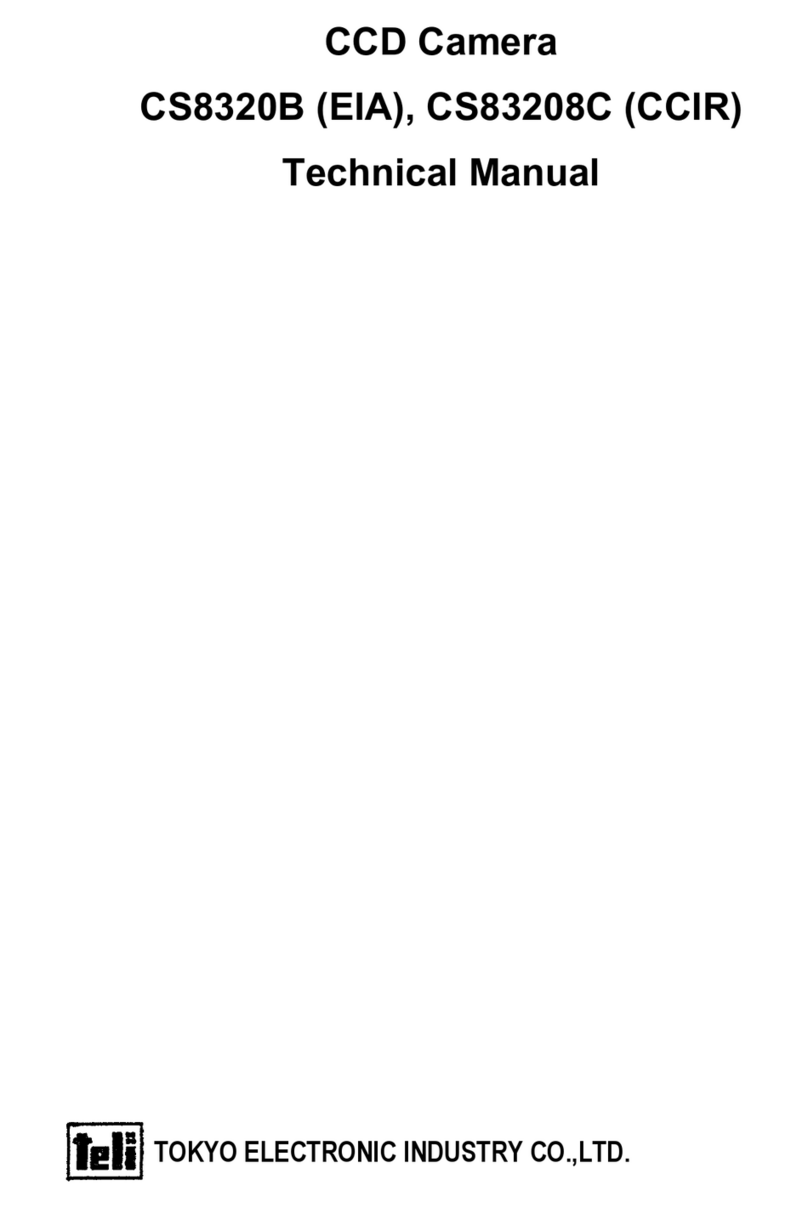
Tokyo Electronic
Tokyo Electronic CS8320B User manual
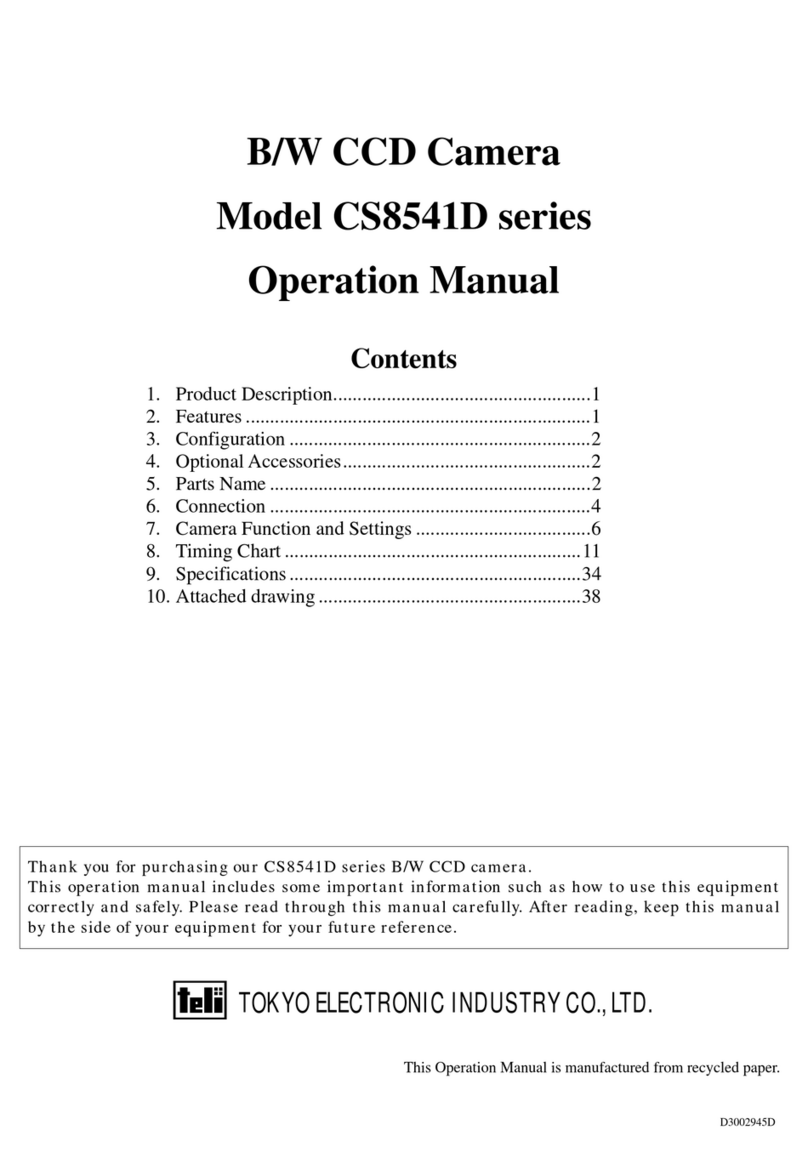
Tokyo Electronic
Tokyo Electronic CS8541D series User manual

Tokyo Electronic
Tokyo Electronic CS8530-01 User manual
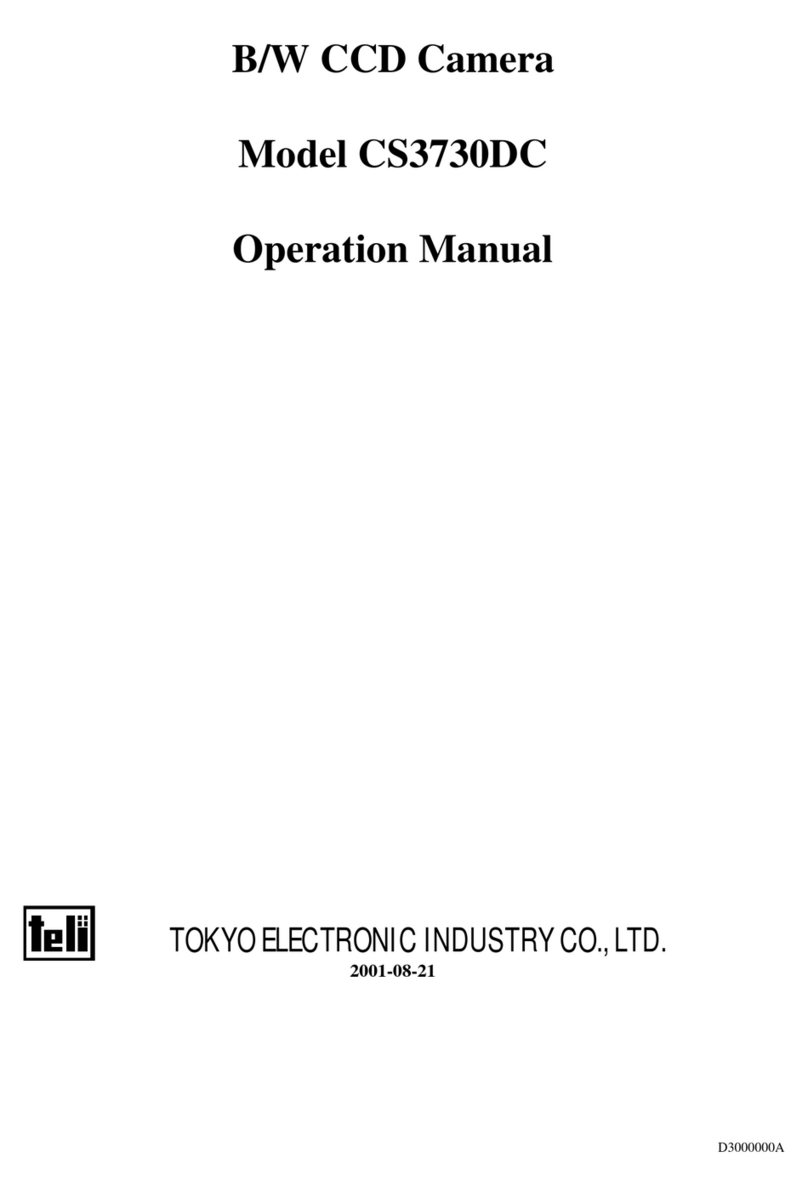
Tokyo Electronic
Tokyo Electronic CS3730DC User manual

Tokyo Electronic
Tokyo Electronic CS8550i-01 User manual
